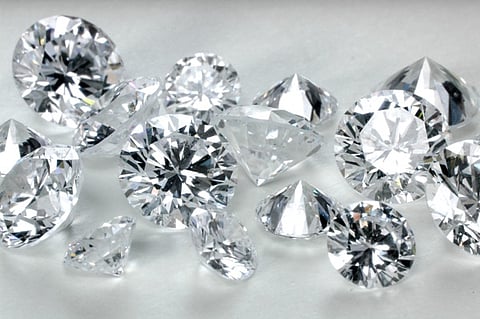

Discovering diamond treatments and synthetic diamonds are a dare to the complete industry. Some diamonds treatments are more perplexing than others to classify. Here are the main diamond treatments and synthetics to know about.
Synthetics:
Synthetic diamonds are indistinguishable to natural diamonds in their chemical characteristics. Means to identify these subsist and while they can be puzzling and sometimes necessitate costly equipment, they are not believed to be a substantial threat. Conversely, very small diamonds that are set into jewellery can be much more problematic to conclude their origin. Numerous diamond facsimiles, most notably cubic zirconia and synthetic moissanite, also exist. Neither of these fronts huge challenges in identification for a skilled jeweller or gemologist.
Laser Drilling:
When diamonds have black inclusions, they may not be very charming to the eye. A procedure for eliminating these black inclusions developed in the 1960s and had extensive use by the 1970s. First, the laser is fixated on an inclusion and a minuscule drill hole is left after. This permits an acid bath to enter the diamond and eliminate the black imperfections. While this is done in an determination to increase the appearance of the diamond, one can dispute whether it really does since it leaves a drill hole and white inclusion where there used to be a black inclusion. Most laser drilling is stress-free to recognise. Though, some fresher approaches are more challenging since they do not leave a drill hole. Assessing is unreliable. Some will drop the price of the diamond due to the drilling process, while others will not, claiming that the diamond may still have the identical clarity grade but with marginally enhanced appearance. The significant thing here is disclosure. In the U.S., it is compulsory to disclose all diamond treatments. As long as patrons know what has been done, it is then up to them to make an knowledgeable buying decision.
HTHP
HTHP is the abbreviation for ‘High Temperature, High Pressure’. This treatment was honed in the early 2000s for altering the colour of a diamond using nothing more than measured heating combined with high pressure. These pricey presses are effectual on some diamonds and can alter the colour from a low yellowish or brownish colour all the way up to D, E, or F colourless. The matching process can also be expended to change some diamonds into fancy colour diamonds such as deep yellow or other colours. Distinguishing this treatment is the most challenging in the industry. Occasionally, minute signs are left behind that can be proof positive of the treatment. But most times, there are no signs. High-level equipment can act as screeners for these treatments.
Irradiation
Irradiation of a diamond is used firmly to create fancy colour diamonds from off-colour low-cost diamonds. The process is orderly and steady. Subsequent colours can be a broad range comprising green, yellow, orange, pink, and even red. Some irradiated diamonds are comparatively easy to detect with simple tests and magnification while some need more all-encompassing testing and equipment.
Clarity Enhanced
Clarity Enhancement is a process concerning the use of a lead-based glass that through heating and pressure, is interconnected into the diamond, successfully walloping the fluffy type of inclusions. The film-like sheet of glass is so thin and microscopic that it does not augment weight (if any at all) to the diamond. The process is very efficient in hiding these inclusions. The correct term for this treatment is clarity enhanced, though many in the trade prefer to use the term “fracture-filled”diamonds do not have fractures that are being filled; they are cleavages (feathers), and gemologically speaking, there is a difference.
Follow DiamondWorld on Instagram: @diamondworldnet
Follow DiamondWorld on Twitter: @diamondworldnet
Follow DiamondWorld on Facebook: @diamondworldnet
